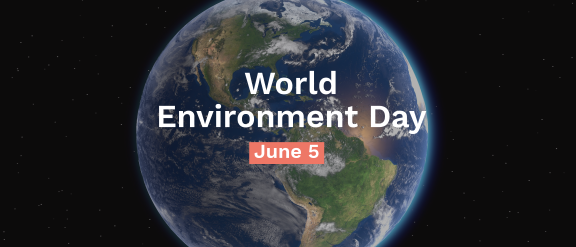Our roadmap to living sustainably and protecting the environment
World Environment Day on June 5 is the perfect opportunity to highlight how we are protecting biodiversity, guided by our ESG Roadmap.
The United Nations Environment Programme has made this year’s theme Only One Earth, focusing on living sustainably in harmony with nature.
Fabienne Michalon, Global Environment Manager, emphasized that protecting biodiversity has always been a part of our business. “Traditionally, we’ve implemented a risk-based approach in our projects to prevent adverse impacts on the most sensitive areas. We have a track record of mitigation activities in Oman, New Caledonia, Mexico, Ghana for example.”
“With our ESG Roadmap, we are taking protection of biodiversity to a new level. We have ambitious targets, a clear plan and strong support from our leadership, and our HSE and Operations teams throughout the business."
In particular, one pillar of our ESG Roadmap is to Drive solutions for the climate, which includes a strong commitment to enhance circularity and protect biodiversity. By 2025, we aim to establish biodiversity management plans on high environmental risk projects. Along the same timeline, we plan that half of the water consumed on sites will come from reused sources.
We are launching a systematic mapping and assessment of the impacts of our sites to help us better identify high environmental risk projects. This will also help us, develop a way to assess sensitivity when we select new projects, as well as for our operations in general.
We also plan to reinforce our internal standards during a project’s life cycle and to define and monitor new impact and performance indicators for biodiversity. This will lead to the implementation of mitigation measures such as erosion control or landscape restoration.
Fabienne added: “People across our company are already implementing tangible measures. For example, at a project in Latin America our team has acted to identify and protect vulnerable species on site. They have also created nurseries to make sure native plants can be replanted when construction work is completed. At a project in India, we have removed and transplanted palm trees that would otherwise be cut down. And at our Loading Systems site in Sens, France, the team has created an urban forest.”
The energy transition takes us into a new era which involves the eco-design of solutions. This means integrating environmental issues such as biodiversity into the design of our projects or products without compromising quality. For instance, we could look at reducing a plant plot plan including roads, reducing noise nuisance and explore ways to preserve water by re-using it at maximum.
Fabienne concluded: “Biodiversity is a complex and vast subject and Technip Energies is working on partnerships with environmental players to take it further. Our clients can be assured of our full commitment to biodiversity at every stage of their project.”
